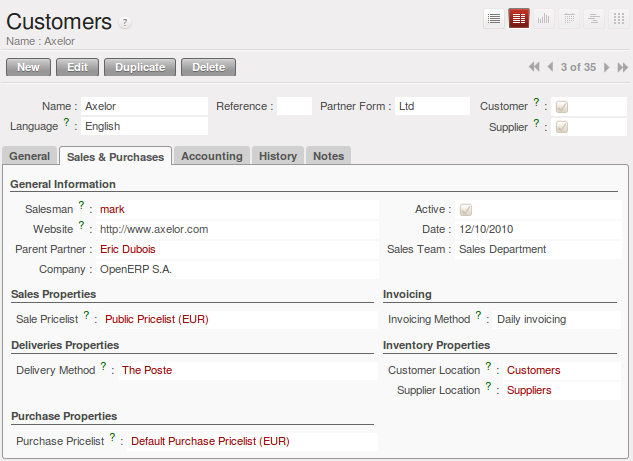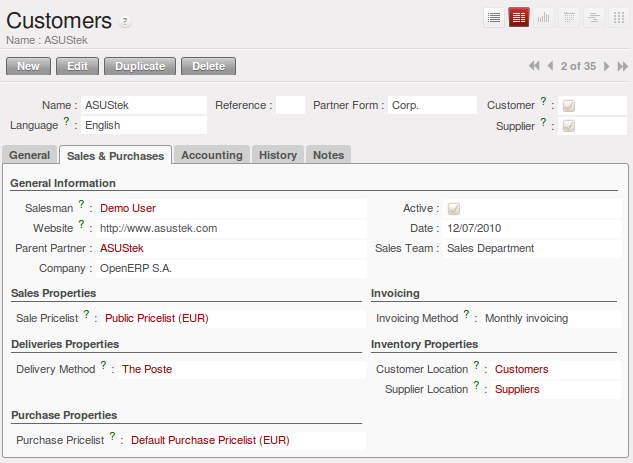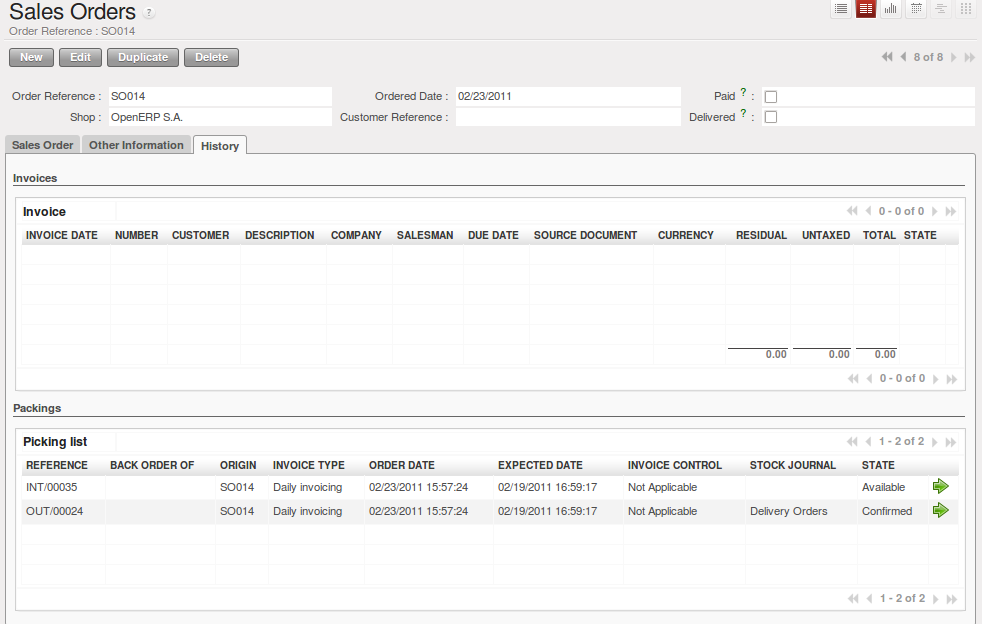Organize your Deliveries¶
You can manage stock through journals in the same way as you can manage your accounts through journals. This approach has the great advantage that you can define journals in various ways to meet your company’s needs.
For example, a large company may want to organize deliveries by department or warehouse. You can then create a journal and a manager for each department. The different users can work in a journal as a function of their position in the company. That enables you to better structure your information.
A company doing a lot of transport could organize its journals by delivery vehicle. The different delivery orders will then be assigned to a journal representing a particular vehicle. When the vehicle has left the company, you can confirm all the orders that are found in the journal all at the same time.
The Different Journals¶
Install the Reconfigure option Invoicing Journals for Sales Management or the sale_journal module to work with different journals. This adds two new concepts to OpenERP:
- Invoicing journals,
- Stock journals or Delivery journals.
Invoicing journals (Sales ‣ Configuration ‣ Sales ‣ Invoice Types) are used to assign purchase orders and/or delivery orders to a given invoicing journal. Everything in the journal can be invoiced in one go, and you can control the amounts by journal. For example, you can create the following journals: daily invoicing, end-of-week invoicing and monthly invoicing. It is also possible to show the invoicing journal by default in the partner form. Set the Invoicing Method to Grouped (one invoice per customer) or Non Grouped (individual invoices) according to your needs.
Stock journals (Warehouse ‣ Configuration ‣ Warehouse Management ‣ Stock Journals) allow you to classify the delivery orders in various ways, such as by department, by salesperson or by type. If a salesperson looks for a delivery order in his own journal, he can easily see the work on current items compared with his own orders.
Tip
Default Values
To enter all the orders in his own stock journal, a salesperson can use the default values that are entered in the fields when creating orders.
Finally, the stock journals can also be used as delivery journals to post each item into a delivery journal. For example, you can create journals dated according to customer delivery dates (such as Monday’s deliveries, or afternoon deliveries) or these journals could represent the day’s work for delivery vehicles (such as truck1, truck2).
Using the Journals¶
You will now see how to use the journals to organize your stock management in practice. After installing the module sale_journal look at the list of partners. In the tab Sales and Purchases on any of them you will now see the field Invoicing Method.
You can create a new Invoicing Journal for a partner through the menu Sales ‣ Configuration ‣ Sales ‣ Invoice Types. You can decide if the invoices should be grouped or not when generating them in the journal. Create a second invoicing journal End-of-Month Invoicing which you can assign to another partner.
Then enter the data for some sales orders for these two partners. After entering sales order data, the field Invoicing Mode in the second tab Other Information is completed automatically from the partner settings.
Look at the History tab of the Sales order, and observe the Picking List that has been created. The field Invoicing Mode is automatically shown there.
At the end of the day, the invoicing supervisor can display the list by journal. Go to the menu Sales ‣ Invoicing ‣ Lines to Invoice. Add a New Filter by selecting Invoice Type contains Daily, or any other part of the invoice journal you are using. Select the different orders in the list. You can automatically carry out invoicing by clicking the action Make Invoices (the gears symbol).
Tip
Confirming Invoices
By default, invoices are generated in the draft state, which enables you to modify them before sending them to the customer. But you can confirm all the invoices in one go by selecting them all from the list and selecting the action Confirm Draft Invoices.
At the end of the month the invoicing management does the same work, but in the journal ‘month-end invoicing’.
You can also enter a journal to confirm / cancel all the orders in one go. Then you can do several quotations, assign them to a journal and confirm or cancel them at once.



